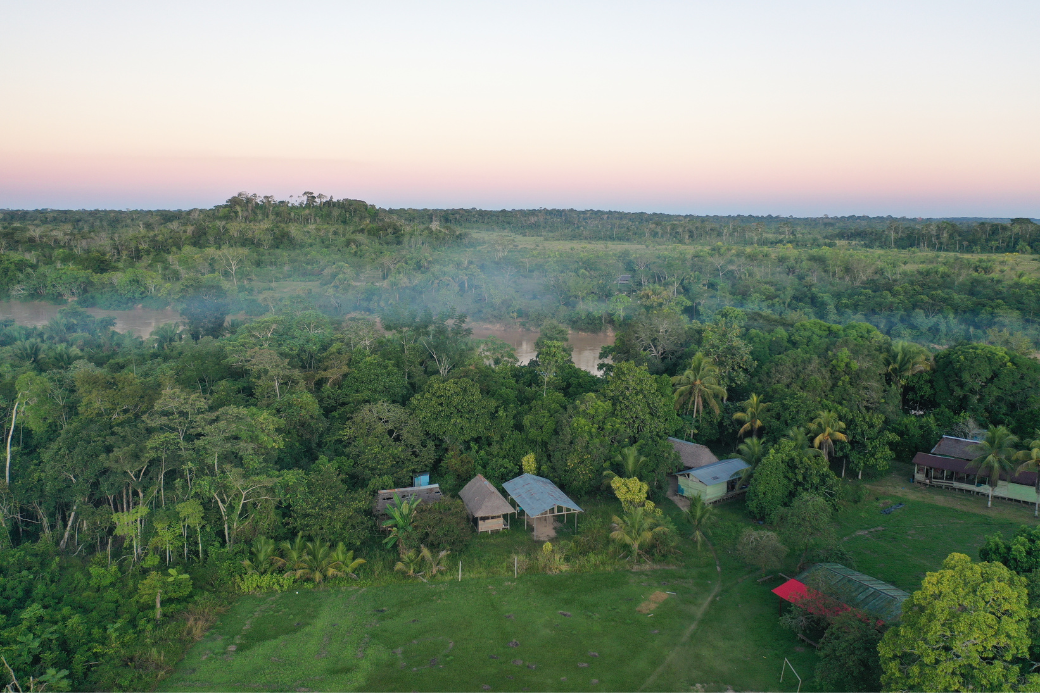By Alberto Giuffrè, Sky Tg24 journalist
There is a piece of the world where every day we choose sides: whether to sell off a forest, making a lot of money right away and at the same time leaving an unsustainable debt to nature for those who will come after. Or whether to conserve this forest. Make a profit yes but leave the accounts in order. For those living in the Amazon, it is a divisive choice. More than a river that separates two banks: you stand on one side or the other. More than the seasons, which here are two: there are no winters or springs, from dry to rainy. What is at stake in this choice does not have to do with the future of the planet: it has been going on for millions of years, it will manage this time as well. It does, however, have to do with our future and how much we will have to adapt to the changes to come.
In Peru, fighting deforestation mainly means going up against gold diggers or drug traffickers.
But why is the Amazon so important even to those thousands of miles away? “Because it absorbs greenhouse gases, primarily Co2,” Ronald Corvera Gomringer, director of the Instituto de Investigaciones de la Amazonia Peruana, explains. “What happens in the Amazon,” he adds, “has consequences for the planet’s climate.
The man-made climate crisis with the use of fossil fuels-oil, gas, coal-is the most urgent concern. To lose the forest is to lose an ally in limiting global warming that is leading around the world to increasingly frequent and intense extreme events. There is one balance, in particular, that is breaking down: “The forest,” says Gomringer again, “is losing its ability to absorb Co2.
Thanks to Cesvi, an NGO that operates in 90 countries around the world and has been present in Peru for more than 30 years, we visited some of the projects funded by the European Union that are trying to combat the phenomenon.
In the Madre de Dios region, one of the areas with the most biodiversity in the world, fighting deforestation means above all encouraging local communities to resist the temptations of mineros, the gold diggers who offer easy money in exchange for pieces of forest.
Among the communities is that of the Boca Pariamanu. We get there starting from the town of Puerto Maldonado, after a two-hour boat ride on the Madre De Dios River.
Boca Pariamanu is one of 37 native communities in the region: thirty-six or so families of the Amahuaca ethnic group who live off what they produce, harvest, and hunt. Everyone has a role: there is the treasurer and there is the security officer who patrols the borders of the government-assigned piece of forest. There is a kindergarten and an elementary school. A few televisions but no Internet connection. A few years ago the Boca Pariamanu met Pope Francis during his visit to Peru. And to Bergoglio, who has made defending the environment one of the cornerstones of his pontificate, they also dedicated a piece of forest. A few years ago the community decided to open up to tourism. Of course, travelers who want to come here have to be more than accommodating and give up many comforts. But they have a chance to see up close how life works among the trees and especially to observe the forest in all its splendor.
Being able to spend the days together with an Amazonian community is not a given. Some of them are so-called “never contacted” tirbu.
Indigenous people who, precisely, remain sheltered from the rest of the world. They live deep in the forest and any contact, given their immune systems, would jeopardize their existence.
The Boca Pariamanu, on the other hand, open up to the outside world and at the same time recover their identity. “We are trying to recover our traditions,” says Jane Inés Del Castillo Ramírez: “Whether it’s our drinks, our food, our crafts. We want to recover it because these are very beautiful things that are sacred to us. In the past our ancestors, our masters made sure that they were forgotten, they did not want us to continue the traditions of the community.”
There is one forest fruit here that represents the fight against deforestation more than any other: the Amazonian nut. The chestnut, they call it here. Boca Pariamanu is a community of castagneros. The fruit looks like a coconut and contains nuts inside. It is harvested from trees that are among the tallest and oldest in the forest . And from the nut starts a supply chain that involves thousands of people. In fact, from the forest the nuts arrive at consortia such as Ascart where they are shelled, dehydrated, peeled and packaged for sale. The entire supply chain follows circular economy principles. Every part of the chestnut is used, employing other people.
Walnut but not only. Also in the Madre de Dios region operates Palsamad, an association that processes a fruit called Aguaje. It is harvested from the palm trees that grow in 2300 hectares given in concession for 40 years. From the fruit a drink is made that is highly valued in these parts. An activity, however, that does not please the mineros, who are always looking for new pieces of forest to exploit. “They have invaded us twice,” the head of the association tells us, “When we enter the forest we cannot go alone, we always have to be two or three, because the prospector has no respect.”
Continue reading and watch the video report on the Sky TG24 website.
Preview here:
